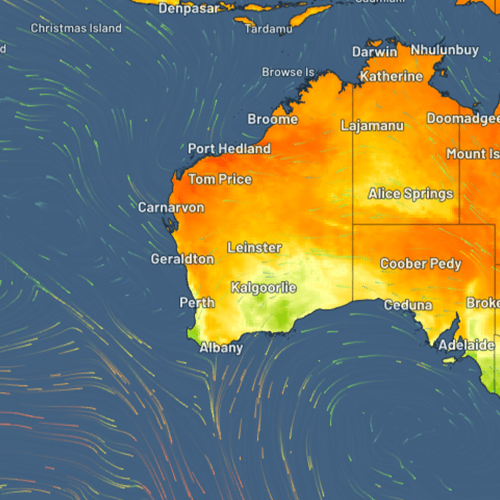Australian scientists have made a major breakthrough on seaweed that can be fed to cattle and drastically reduce their methane emissions.
The researchers are confident they have cracked the genome code for Asparagopsis.
The species of seaweed produces a chemical compound called bromoform, which prevents the formation of methane during the digestion of food.
Feeding the red seaweed to livestock can slash methane emissions by more than 80 per cent.
An international research team has spent three years studying the genetics of the warm water seaweed, which is native to Australia.
The team has figured out how to grow high quality crops quickly and in big volumes.
“So we’ve got the genome blueprint for us to be able to fast track the development of the seaweed,” marine scientist Nick Paul told AAP.
Professor Paul, from the University of the Sunshine Coast, said the research began after it was discovered that different seaweed produced different levels of bromoform, depending on how it was farmed and processed.
The researchers from Australia, New Zealand and Japan also found some female seaweed performed better than male seaweed in helping to remove methane from the atmosphere.
“The active ingredient that reduces methane in the rumen of the cattle is about 20 per cent higher in females than it is in males” Prof Paul said.
“If we can make all females then that gives us a 20 per cent boost.”
The team has been gathering specimens in an “underwater wonderland” off a rocky shoreline at Moffat Beach near Caloundra in Queensland.
The 12-person team then cultured the seaweed in a laboratory as well as large outdoor tanks.
The research was focused on ways to grow enough Asparagopsis to have a meaningful impact on global greenhouse gas emissions.
“We first needed to improve our understanding of the biology and ecology of this new crop,” Prof Paul said.
“You don’t have to have the genome to grow seaweed but it will make it easier for farmers to scale up.”
Work is being done elsewhere to boost the commercialisation of Asparagopsis.
The CSIRO-backed company FutureFeed has granted licences to producers attempting to understand the crop, but there is no large-scale production in Australia.
“Each of these producers is conducting its own research into the most efficient way to grow Asparagopsis,” FutureFeed’s Joanne Barber told AAP.
“The biggest challenge is scaling the industry to provide for the enormous number of ruminant livestock in the world.”
Prof Paul told AAP the research would be “another tool in the toolbox” for Asparagopsis growers around the world.
To grow enough methane-busting seaweed for Australia’s 25 million cattle, at least 50,000 hectares or about 10 Sydney harbours would need to be set aside.
Prof Paul said it was unclear what that would do to the marine environment because of the chemicals Asparagopsis released.
“If we’re making much more Asparagopsis than has ever been seen on the planet, what is that going to do?”
While his research will help farmers work out when and where to grow the seaweed, there are still questions over the ability to produce it at a commercial scale.
“Whether we can farm it at a cost low enough to justify its use for methane reduction is the big question,” Prof Paul said.
The research team has released the Asparagopsis genome information in an open access database and submitted a scientific paper for peer review.







